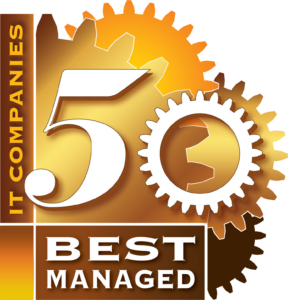Why IT Strategy is a Best Practice for Every Company
Why IT Strategy is a Best Practice for Every Company
IT Strategy is a Must for Companies
IT Strategy is something every company should incorporate. Hi, I’m Colin Shantz, CEO of CopperTree Solutions. And today I’m going to be talking about why every company needs an IT strategy.
Challenges: Lack of IT Strategy
I speak to a lot of different business leaders every week. And one of the challenges that I see in some companies is that they don’t seem to have a clear IT strategy in place. One of the things that happen when you don’t have a clear IT strategy in place, is you tend to operate in a very reactive way. You put out fires as they come up rather than consider the organization’s needs or what can happen for IT. At the end of the day, you don’t know what you don’t know.
As a business leader, if risks/opportunities aren’t known, then there’s no way to know what you should be doing. Thus, it’s important to have somebody looking at both the business and technology. It’s also important to make a plan for where you are today and where you’re trying to get to in the future. We also see if legacy hardware/software is in place, there are often security risks you may not even be aware of. Additionally, the security landscape changes fast. It’s changing some things that we’re doing today. We’re doing a lot of things that we didn’t have to do a year or two ago. So, it’s important to always be revisiting and making sure that you’re staying on top of technology. It’s also important to make sure you have a plan to get from wherever you are today, to where you’re trying to go tomorrow.
How CopperTree Advises IT Strategy
Part of CopperTree’s onboarding process when we bring on a new client is to develop an IT strategy. This is also part of our VCIO process going forward. So, first of all, we’re looking at where we are today. Where are we trying to get to in the future? What are the business challenges that we’re trying to solve? Are there risks we’re trying to mitigate? What are the:
- systems,
- tools,
- hardware,
- software,
- vendors in place today?
So, it’s about a gap analysis that says here’s:
- where we are today,
- where we’re trying to get to in the future,
- how we’re going to get there.
And that all gets broken down into short-term initiatives.
New Client Challenges
Oftentimes when we bring on a new client, there are a lot of immediate challenges that need solutions. Additionally, there are risks needing elimination or continuous problems needing solutions. And so those tend to be short-term solutions that need to be in place.
Then we also have longer-term initiatives. Here we say, in the next year or two, we’d like to make changes/improvements, and here’s what that looks like. So it’s about breaking down those initiatives into the short-term, then longer-term ones.
After that, we kind of move into the ongoing reassessment. We look at your infrastructure every month. We also revisit that strategy and have a discussion about where we are on a quarterly basis as well. When I ask business leaders what they want from technology, I almost always get a version of the same answer. And at the end of the day, what we all want is we want everything to work. We want to sleep at night knowing that our risks are being managed and that we have the right technology in place.
IT Strategy for Our Clients
So, for our clients, we come in and we take ownership of the IT results at the organization. And that starts with the IT strategy. To understand the organization, we’ll sit down with your business department heads. We’ll understand what their goals are, and what their challenges are. And then we start to make a plan. If that’s where we are today, here’s what we need to do to improve in the future and to make progress moving forward.
Our core value is accountability. And we know that we are accountable for IT success in your organization. So it’s not only about coming in and taking parts of IT, we’re responsible for outcomes. Our clients rely on us to manage everything from the strategy to the execution as well. And that’s pretty important to us. Most of our clients don’t have a lot of IT ability in-house. Thus, we are the IT department, and we take that responsibility very serious.
The more valuable aspect of our quarterly VCO meetings is talking about recommendations. As we work with your infrastructure, we’re seeing how you compare to our best practices. Additionally, we’re looking for any challenges. Also, as we talk to the users, we uncover issues. Then, we bring that back to our quarterly VCO meetings to talk about what you need to do in the next little bit. Such as, here are some business decisions that you need to be making. Our job is to put those business decisions in front of you. This is a business decision, not a technology decision. We’re going to be looking at ROI. We’re going to be looking at the pros and cons of each of these different solutions. And our job is to bring you those decisions that you otherwise wouldn’t have.
At the End of the Day
So, you don’t know what you don’t know. Unless someone hands you a decision, you can’t take advantage of a solution or mitigate risks. Thanks for joining us today as we talked about why every company needs an IT strategy.




